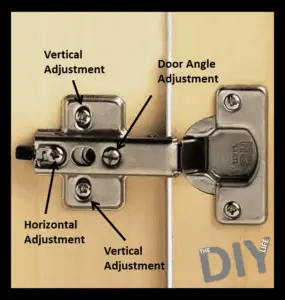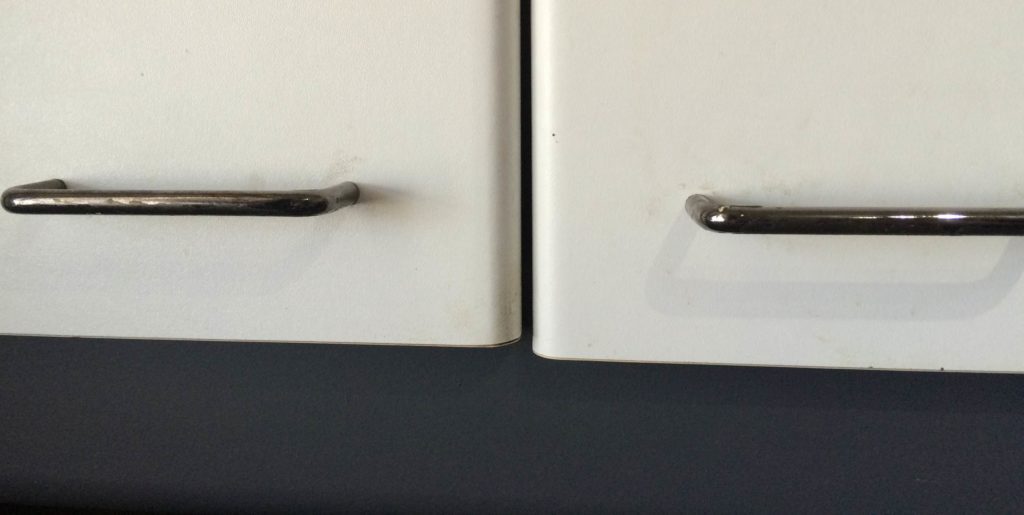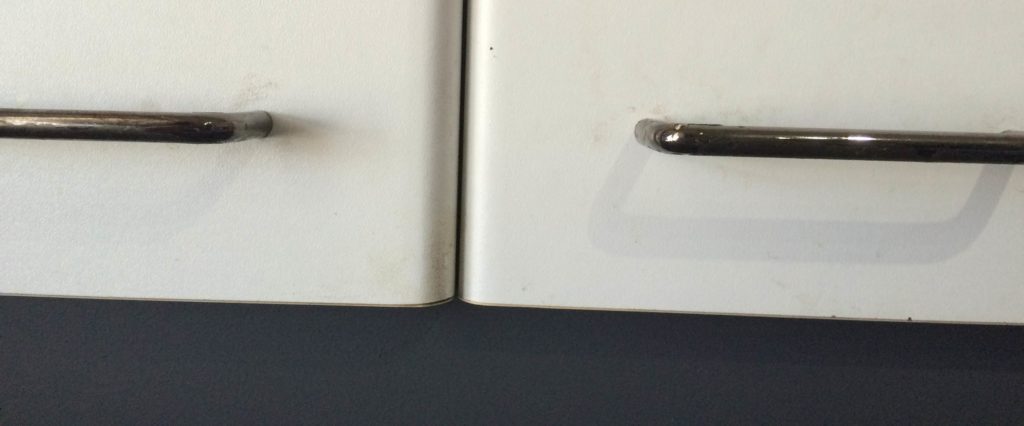If your cabinets have adjustable concealed hinges, you may need to adjust them every now and again to keep the doors in line and opening and closing freely. Luckily this can be done quickly and easily if you know which screws to turn. Take your time and make small adjustments, checking the correction each time until the doors are in line and closing snugly.
As per the image above, first adjust the hinges vertically. You will need to do this by loosening all of the hinges on the door at once. Loosen the top and bottom vertical adjustment screws one or two turns so that you can move the door in small increments with some force otherwise the whole door may come loose and you will have to recruit someone to hold the door in place while you screw it back on. When the door is in the correct position, tighten all of the screws in the slotted holes.
Next adjust the hinges inwards or outwards. If the door fouls the cabinet side when closing or there is a large gap between the door and the cabinet side when closed then adjust the hinge outwards or inwards respectively to correct for this.
Finally you straighten the door. This is done with the screw on the front of the hinge. This will need to be done in conjunction with the other hinges on the door so make small adjustments to each until the door is straight. If the top edge of the door is too high, you will need to adjust the top hinge outwards (screw clockwise) and the bottom hinge inwards (screw anti-clockwise). If the top edge of the door is too low, you will need to adjust the bottom hinge outwards (screw clockwise) and the top hinge inwards (screw anti-clockwise).
Doors before:
Doors after:





Hi Michael, My cabinet doors won’t stayed closed. They are the original unges, about 25 yers old. When I close them, they pop open about 1-2 inches. I’m using rubber-bands to keep them closed. What do I have to do?
Janet W
Sounds like you need cabinet latches. There’s various types. Double Roller & Magnetic are 2 of the most popular for cabinets. Magnetic are easier to deal with & can be easier for seniors or people with limited strength. Double Roller have a stronger grab. Do a search for Cabinet Latches & you’ll see these 2 as well as many others. Good Luck!
Michael, Thank you so much for these instructions. I recently aquired a 2nd hand cabinet that I had to disassemble to bring home & then reassemble. I don’t have any experience with this type of hinge & loosened the wrong screws & now the doors have a big gap between them. Your instructions are just what I need to get the doors in their proper positions. I also brought home a matching stack of drawers which also had to be disassembled & reassembled. 2 of the drawers don’t close smoothly but I don’t know why. I put both on lockable wheels so I can move them around in my garage.
My kitchen cupboards are 3 and 1/2 years old. A couple of them won’t stay open even when the door is fully opened. Which screws should I adjust?
The adjustment screws are for the position of the door, if they’re not staying open then the springs are likely worn out and need to be replaced.
One of my cabinet doors are warped They have the hinges that are adjustable
Can I unwary the door?